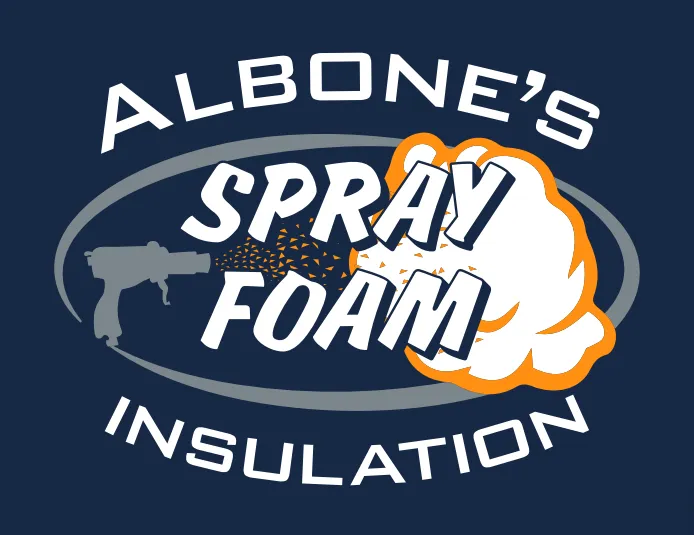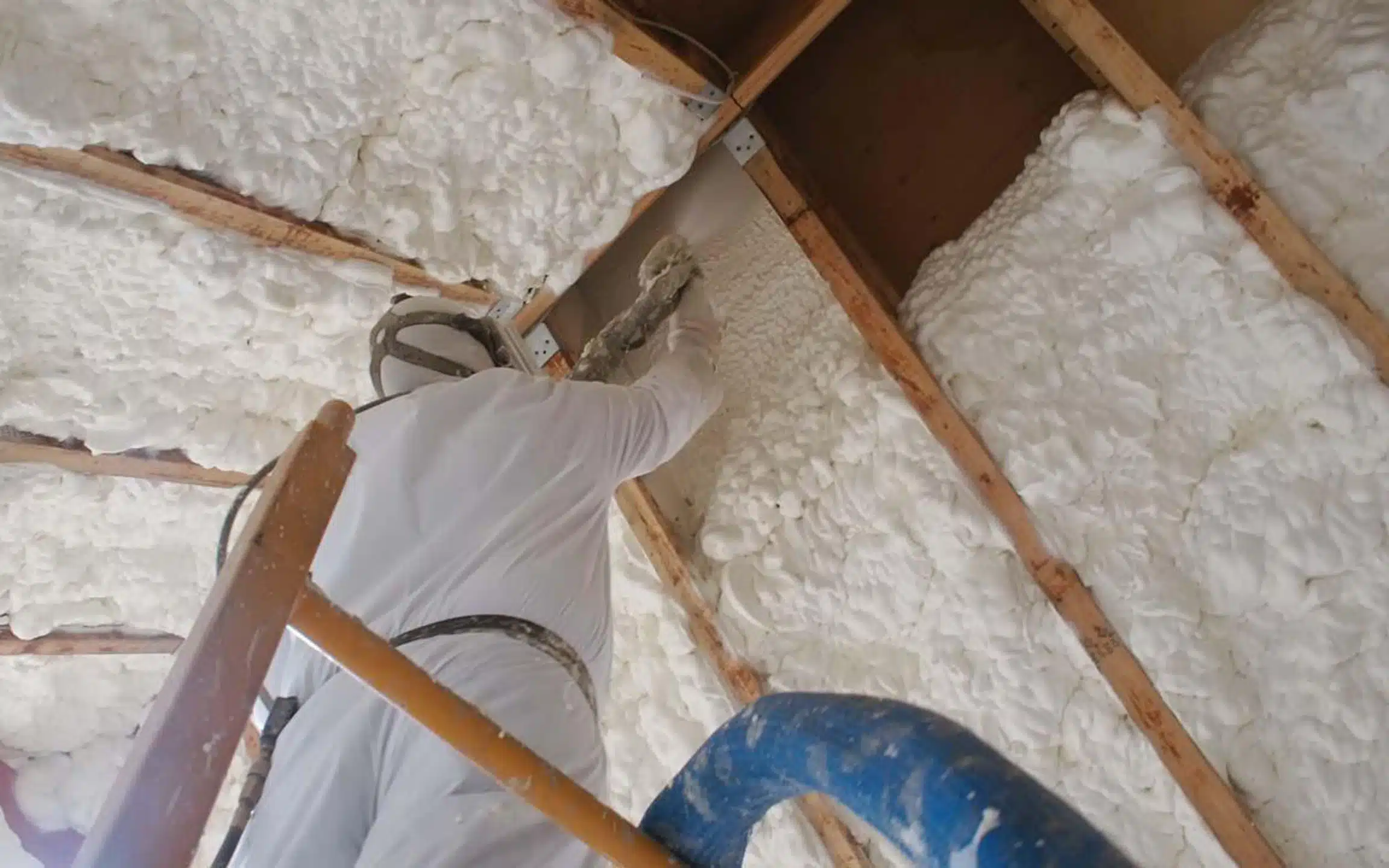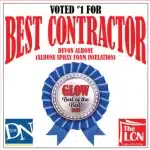Understanding Spray Foam Insulation
Spray foam insulation is a highly effective material used to create airtight seals in residential and commercial buildings. Unlike traditional insulation options like fiberglass or cellulose, spray foam expands upon application, filling gaps and preventing air leakage. By addressing uncontrolled airflow, this insulation method significantly improves energy efficiency, indoor air quality, and overall comfort.
How Air Leaks Contribute to Energy Waste
Air leaks occur when gaps or cracks in a building allow conditioned air to escape while letting in unfiltered outside air. These leaks contribute to higher energy bills and temperature inconsistencies. Common problem areas include:
- Attic hatches and recessed lighting fixtures
- Gaps around doors and windows
- Electrical outlets and plumbing penetrations
- Basement rim joists and foundation cracks
Unsealed leaks force heating and cooling systems to work harder, leading to increased energy consumption. Addressing these leaks with an effective insulation solution is crucial for optimizing energy performance.
The Expanding Properties of Spray Foam
Spray foam insulation is made of two liquid components that mix at the point of application, triggering a chemical reaction that causes expansion. This expansion allows the foam to fill even the smallest cracks and crevices, ensuring a seamless barrier against air infiltration.
There are two main types of spray foam insulation:
Open-Cell Spray Foam
- Lightweight and flexible
- Expands more than closed-cell foam
- Offers superior soundproofing properties
- Suitable for interior walls and attics
Closed-Cell Spray Foam
- Dense and rigid
- Provides structural reinforcement
- Acts as a moisture barrier
- Ideal for basements, crawl spaces, and exterior walls
Both options effectively seal air leaks and improve a building’s energy efficiency, but the choice depends on specific project needs.
How Spray Foam Improves Energy Efficiency
By forming an airtight seal, spray foam minimizes heat transfer and reduces the load on HVAC systems. Key energy-saving benefits include:
Reduced Heating and Cooling Costs
With fewer air leaks, less energy is required to maintain indoor temperatures. Homeowners and business owners typically see a reduction in utility bills after installing spray foam insulation.
Consistent Indoor Temperatures
Spray foam prevents hot or cold spots by evenly distributing insulation throughout a space. This leads to better comfort levels in every room.
Prevention of Moisture and Mold Growth
Unlike other insulation materials, closed-cell spray foam resists moisture infiltration. This helps prevent mold growth, wood rot, and structural damage caused by excessive humidity.
Longevity and Durability
Spray foam does not settle, degrade, or lose effectiveness over time. A properly installed spray foam system can last for decades without needing replacement or maintenance.
Improving Indoor Air Quality with Spray Foam
Beyond energy savings, spray foam plays a significant role in enhancing indoor air quality. Air leaks allow dust, pollen, mold spores, and other allergens to enter a home. By sealing these gaps, spray foam reduces exposure to airborne irritants, benefiting those with allergies or respiratory conditions.
Additionally, closed-cell spray foam can block harmful pollutants such as exhaust fumes, radon gas, and volatile organic compounds (VOCs) from entering the living space.
Where Spray Foam Works Best
Spray foam insulation is suitable for various applications, including:
- Attics and Roof Decks: Prevents heat loss and stops moisture-related issues.
- Walls and Crawl Spaces: Ensures proper insulation and air sealing.
- Basements and Foundations: Protects against dampness and structural damage.
- Commercial Buildings: Enhances energy efficiency in offices, warehouses, and industrial spaces.
The Installation Process
Professional spray foam installation involves a few key steps:
- Assessment and Preparation – Inspecting the space to identify areas needing insulation.
- Application – Mixing and spraying the foam to expand and seal gaps.
- Curing and Finishing – Allowing the foam to harden and trimming excess material.
Working with experienced professionals ensures safe and effective application, as improper installation can result in wasted material and suboptimal performance.
Maximizing Energy Efficiency with Professional Installation
At Albone’s Spray Foam, we specialize in high-quality spray foam insulation services that help homeowners and businesses reduce energy waste. Our team ensures a precise application that delivers maximum air-sealing benefits. For a consultation, call (585) 560-1369 or email [email protected].
Frequently Asked Questions
How much can spray foam insulation save on energy costs?
Many homeowners report energy savings of 20-50% after installing spray foam, depending on the level of air leakage in their home before installation.
Is spray foam safe for indoor air quality?
Yes. Once cured, spray foam does not emit harmful chemicals. Additionally, it prevents outside pollutants from entering the space, improving indoor air quality.
Can spray foam be installed in existing homes?
Yes. Spray foam can be applied to attics, basements, walls, and crawl spaces in both new and existing homes.
How long does spray foam insulation last?
Properly installed spray foam insulation can last several decades without losing effectiveness.
Does spray foam provide soundproofing benefits?
Yes. Open-cell spray foam is particularly effective at reducing airborne noise transmission.
Is spray foam resistant to mold?
Closed-cell spray foam is moisture-resistant, helping to prevent mold growth in damp areas like basements and crawl spaces.
What is the difference between open-cell and closed-cell spray foam?
Open-cell foam is lighter and provides better soundproofing, while closed-cell foam is denser, offers more structural support, and acts as a moisture barrier.
Can I install spray foam insulation myself?
Professional installation is recommended to ensure proper application, safety, and long-term performance.
How soon can I occupy my home after installation?
It is typically safe to return 24 hours after installation to allow for full curing and off-gassing.
Does spray foam improve home resale value?
Yes. Energy-efficient homes with spray foam insulation often attract higher resale values due to reduced utility costs and improved comfort.




